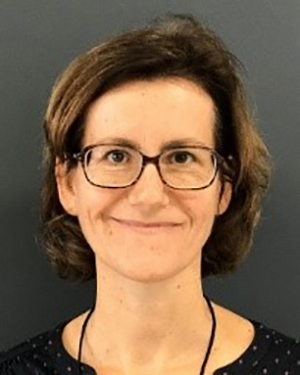Colloquia & Guest Speakers
Polarized Super Resolution Optical Microscopy in 3D for Structural Imaging in Biology
Sophie Brasselet, PhD, Director of Research CNRS, Director of Institut Fresnel, Institut Fresnel CNRS UMR 7249, Aix Marseille Université, Marseille, France
Monday, May 5, 2025
3:30 p.m.
Presented in Goergen 101 and on Zoom
Abstract
Fluorescence imaging and nonlinear coherent optical microscopy can reveal important spatial properties incells and biological tissues from fixed situations to in vivo dynamics. While microscopy can guide interpretation through morphological observations at the sub- micrometric scale, optical imaging cannot directlyaccess the way molecules are organized with given orientations in 3D at the nanoscale. This property, which isimportant in many processes in biology, from immunology to development biology and mechanobiology, is today most often studied using electron microscopy, which is not compatible with live imaging.
We will show that reporting molecular orientational organization down to the nanoscale is possible usingpolarization resolved optical microscopy, which takes advantage of the orientation-sensitive couplingbetween optical excitation fields and molecular transition dipole moments. Non-paraxial fields propagation in high numerical aperture (NA) microscopy permits in particular to access 3D orientation information that isotherwise delicate to access from pure transverse optics [1]. We will describe how high NA optical polarized imaging can provide information on the way isolated molecules are oriented in 3D, including their orientational fluctuations [2]. We will extend this capability to 3D nano-polarimetry, providing properties of electromagnetic fields oriented in 3D [3]. Different approaches will be described using polarized microscopy, including polarizationsplitting, pupil plane splitting and point spread function (PSF) engineering. We will demonstrate the capabilityof these approaches for single molecule orientation and localization microscopy (SMOLM) applied to actin filaments’ organization in dense regions of the cell cytoskeleton [4], which is generally challenging to image insuper resolution imaging. We will finally discuss the extension of 3D polarized methodologies to scanningnonlinear optical microscopy for structural imaging in tissues.
Collaborators
- Miguel A. Alonso
- Luis A. Aleman-Castaneda
- Isael Herrera
- Charitra S. Senthil Kumar
References
- S. Brasselet, M.A. Alonso. Optica 10 (11), 1486-1510 (2023)
- A.K. Adamczyk, et al. ACS Nano 16 (10), 16924-16931 (2022)
- I. Herrera-Hernandez, L. Aleman-Castaneda, S. Brasselet, M. Alonso. J. Opt. Soc. Am. B 41(11), 2134-2148 (2024)
- V. Curcio, L. A. Aleman-Castaneda, T. G. Brown, S. Brasselet, M. A. Alonso. Nat. Communications 11, 5307 (2020)
- C. Rimoli, C. Valades Cruz, V. Curcio, M. Mavrakis, S. Brasselet. Nat. Communications 13, 301 (2022)
Biography

Sophie Brasselet is an optical physicist. She has obtained her PhD in 1997 at the University of Paris Sud and CNRS Bagneux (France) with J. Zyss, on the study of multipolar molecules applied to nonlinear optics in polymers. She then spent two years (1998-2000) as a postdoctoral fellow at UCSD and Stanford University (USA) with W.E. Moerner on the development of single molecule localization imaging methods in cells. After six years at ENS Cachan (France) as an assistant professor, she was recruited as a CNRS researcher at Fresnel Institute (Marseille, France). She is now a CNRS research director and the director of this institute. She has developed non-linear optical microscopy and super-resolved fluorescence imaging based on the control of light polarization for the last fifteen years, with pioneering contributions to provide new imaging methods capable of accessing structural information in biological samples at the nanoscale. She is currently extending these approaches to 3D polarized imaging at high spatial resolution extending single molecule localization microscopy, or to fast, label free organization imaging in biological tissues applicable to biomedical optics. She has published more than 150 peer reviewed articles and given more than 100 invited conferences. She was awarded the CNRS silver medal (2016) as well as the Leon Brillouin Grand Prix of the Optical French Society (2022), and is an OPTICA fellow since 2020.
